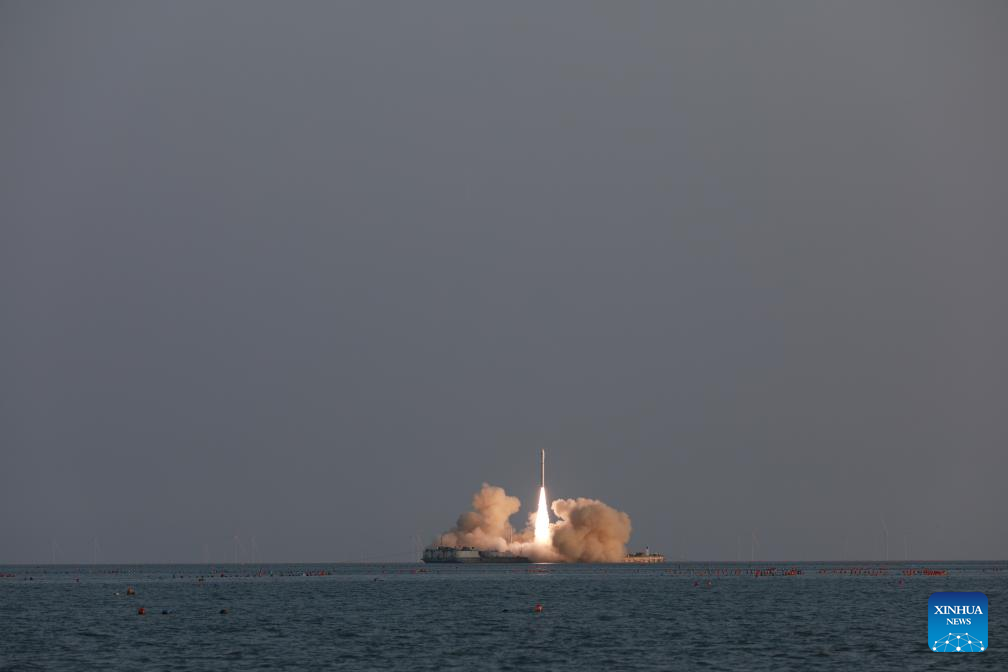6.09.2023

The commercial launch vehicle CERES-1, carrying four satellites, blasts off from the waters surrounding Haiyang, a coastal city in east China's Shandong Province, Sept. 5, 2023. China on Tuesday sent a sea-launched rocket into space from the waters surrounding Haiyang, placing four satellites into planned orbit.
The Taiyuan Satellite Launch Center conducted the offshore mission. It was the 9th flight mission of the CERES-1 rocket series, the launch center said. (Photo by An Di/Xinhua)
China on Tuesday sent a sea-launched rocket into space from the waters surrounding Haiyang, a coastal city in the eastern province of Shandong, placing four satellites into planned orbit.
The commercial launch vehicle, CERES-1, blasted off at 5:34 p.m. (Beijing Time). The Taiyuan Satellite Launch Center conducted the offshore mission.
The rocket maker Galactic Energy said it was the 9th flight and the first sea-based mission of the CERES-1 series. The launch also makes it the first Chinese private company to complete a liftoff from the sea.
Compared with a land-based launch, the sea launch is a new mode, having more flexibility, better adaptability, and more cost-effective services. Furthermore, flexible positioning of the launching and landing areas can ensure spent rocket stages. Other debris falls into the sea rather than on land close to populated areas.
These advantages give the rocket company the confidence to increase the frequency of sea launches in the future.
Aboard the CERES-1 rocket were four satellites Tianqi 21-24, developed by Guodian Gaoke, a Beijing-based commercial sci-tech firm, which are part of the Tianqi low-Earth orbit Internet of Things constellation.
The 38-satellite constellation will go into operation in 2024. It will provide global data services for application scenarios such as emergency communications, ecological environment monitoring, and tower detection.
Quelle: Xinhua
